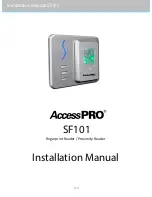
SAFETY
In addition to the standard safety guidelines listed at
the beginning of this handbook, the following special
safety items apply to the Rear Discharge Spreader.
1
NEVER
leave the tractor seat whilst PTO
drive is still engaged.
2
NEVER
allow anyone to stand in the line of
the throw (15 - 20 metres) of the rotors while
the machine is running and always check
that the area is clear before engaging the
PTO.
3
NEVER
allow anyone to ride on the
machine.
4
NEVER
place your hand over any hydraulic
leak as oil under pressure may be forced into
the bloodstream.
5
Do not make sharp turns with the PTO
engaged.
6
Disengage the PTO when turning corners
except when a wide angle joint is fitted. See
‘
OPERATION
’.
7
Regularly check the tyre pressures and the
wheel nut torques.
8
Check the condition of the brake linkage
regularly and always ensure that the brakes are
correctly adjusted.
LEFT AND RIGHT HAND
In this Handbook and Parts List, the terms Right and
Left Hand apply to the machine when viewed looking
forward towards the rear of the tractor.
IDENTIFICATION NUMBERS
When ordering spare parts, always quote the model
number and serial number when available.
PREPARATION OF THE TRACTOR
Ensure that both the tractor and it
’
s towing hitch have
a specified weight capacity in excess of the drawbar
weight of the laden spreader as identified on the serial
number plate. These loads are given in the operator
’
s
manual for the tractor and/or by the hitch
manufacturer.
The following hydraulic services are required:
1. Synchronised trailer brake valve.
2. Double acting spool valve to operate the floor
conveyor.
3. Double acting spool valve to operate slurry door
option if fitted.
The minimum hydraulic flow required is 15 litres/min
at a pressure of 180 bars (2,600psi.). Virtually all
tractors large enough to handle a spreader will have
adequate hydraulic flow. 50 litres per minute will give
the maximum recommended conveyor speed.
3
Ensure that the tractor is equipped with a 540rpm PTO
speed.
FITTING THE MACHINE ONTO THE TRACTOR
Couple the machine hitch onto the tractor in the usual
way. Connect the hydraulic services, brakes and
lights.
Release the handbrake by pulling the lever forward
out of the ratchet tooth then pushing it backwards.
Before loading the machine, check that the brakes
operate correctly without binding and that the road
lighting functions properly. If fitted with the optional
slurry door raise it sufficiently to clear the bed slats,
operate the bed drive in order to check functionality
and ensure there are no hydraulic leaks.
Fit the PTO shaft onto the machine with the overload
clutch at the machine end. Connect the tractor end
onto the tractor PTO stub shaft. Check the PTO shaft
length, ensuring that it does not retract to within
100mm of it
’
s minimum length. Carefully check that
when the tractor is steered at an angle to the machine,
the PTO shaft length is still satisfactory.
If the shaft retracts to leave less than 100mm spare
travel when at its minimum operating length it will be
necessary to shorten the PTO shaft. The PTO inner
and outer tubes and inner and outer guards must all
have the same amount of material removed in order to
obtain the desired 100mm spare travel.
PTO shaft maximum length should not be a problem,
but when fully extended, the overlap between the
sliding members must be no less than half of that
which exists when the shaft is fully retracted.
Note that when lowering the machine on the pick-up
hitch, the PTO shaft will retract slightly. The shaft
should therefore always be disconnected before
lowering the hitch.
Remove the tractor lower links if possible to eliminate
the possibility of damaging the PTO shaft and
hydraulic hoses when negotiating turns. If the links
cannot be removed, position them such that they clear
spreader components when turning and crossing
undulating ground.
OPERATION
WINTER USE
During extreme conditions, it is possible for the slats to
become frozen onto the bed of the machine, thus
preventing movement of the conveyor. Attempting to
operate the machine in this condition may result in
serious damage to the driveline. Before loading,
check that the slats are free to move. Release them
with a bar, chisel or hot water if necessary.
During very cold weather, a pause of just a few hours
can be sufficient to allow the slats to once again
freeze to the bed.
Never leave the spreader filled with a load. The load
can freeze and cause severe problems in unloading.
Содержание TITAN 6
Страница 1: ... _ _ _ _ _ _ _ _ _ _ _ _ ...
Страница 43: ...40 WIRING DIAGRAM LIGHTS WIRING DIAGRAM TRACTOR LEAD ...
Страница 44: ......







































